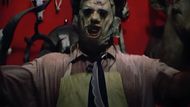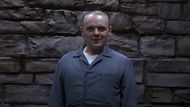Ed Gein's name still gives shivers to fans of horror, and it's no surprise that movie makers kept turning to his horrific life for inspiration again and again. The Wisconsin farmer, who was arrested in 1957 on charges of killing women and having a ghastly collection of human body parts, became an unwitting template for some of cinema's greatest killers.
His tale, reclusive, unsettling, and horribly repellent, is still calling the shots in the horror genre to this day. As per Vanity Fair, author Christopher Berry-Dee said,
"You can understand why moviemakers gravitate toward Gein. He’s unique, creative, enterprising, and imaginative. We don’t get many killers like Ed anymore."
And so, what are the iconic movies inspired by Ed Gein? From Psycho by Hitchcock to The Silence of the Lambs, Gein's fixation on death, loneliness, and his mother made her the dark shadow upon which some of horror's greatest characters were constructed.
These films did more than tell tales; they reflected the dark aspects of Gein's actual crimes, capturing his horrific actions in memorable movie villains.
Let's have a look at these 5 classics that took inspiration from the harrowing serial killing incidents of Ed Gein
1. Psycho (1960)
Alfred Hitchcock's Psycho is usually the first movie that comes to mind when Ed Gein is mentioned, although the connection is tangential. Novelist Robert Bloch, who penned the book, was raised in Wisconsin mere miles from Gein's farmhouse and was appalled at newspaper accounts of Gein's murders.
Norman Bates's character has a number of the same major psychological characteristics as Gein, including an obsessive devotion to his mother and a compulsion to maintain elements of her existence after death. Gein supposedly maintained his mother's room untouched many years after she died, something Bloch took inspiration from in creating Norman's creepy domestic life.
The cultural influence of the film has been tremendous, solidifying the blueprint for numerous subsequent horror movie monsters.
2. Three on a Meathook (1972)
This lesser-seen horror from William Girdler is about a young man who seduces women to his secluded farm, engaging in grotesque acts with the dark veil of an overbearing and dominating father. Although the story takes some liberties, the movie's portrayal of rural seclusion, family domination, and fixation on matriarchal authority patently references Ed Gein's childhood and mental upbringing.
It is an illustration of how the family life and environment of Gein's existence led him to degenerate into criminality, a show of how filmmakers drew narrative inspiration from real-life horror.
3. Deranged (1974)
Deranged is about Ezra Cobb, a character eerily similar to Ed Gein, who dug up corpses and had them stay in his house under the inspiration of his mother's memory. Although Gein's true attempts at grave robbing were partly foiled by his mother's concrete burial vault, his obsession with bodies, especially middle-aged women who looked like his mother, was actual and appalling.
The film pushes the psychological terror of Gein's crimes, as much highlighting the crimes themselves as it does the compulsive motives behind them.
4. The Texas Chain Saw Massacre (1974)

Tobe Hooper's The Texas Chain Saw Massacre brought us Leatherface, a murderer who wears masks fashioned out of human flesh. Hooper, raised in Texas by tales of Gein's atrocities, mined much of his movie from these actual atrocities.
Ed Gein did not engage in cannibalism, yet his creation of accessories from human corpses, belts out of nipples, a lampshade out of skin, leggings of human tissue, was eerily repeated in Leatherface's appalling look. The movie illustrates the way in which Gein's fixation on human remains manifested into one of the greatest horror images of all time.
5. The Silence of the Lambs (1991)

Thomas Harris' Buffalo Bill character is also an obvious on-screen descendant of Ed Gein. Buffalo Bill's notorious "woman suit" made out of human skin mirrors Gein's own collection of gruesome mementos, such as a "mammary vest" and human masks.
Harris combined characteristics of several killers, but the body modification obsession and psychological fixation are very close to Gein's criminal profile. The movie probes the sickening intersection of loneliness, fixation, and psychopathy, following the horrors of Gein's acts of violence and infusing them with layers of narrative depth.
Ed Gein's influence on Hollywood is a measure of the lasting power of true horror to shape fiction. These five movies, spread over a period of more than three decades, are not only about the gruesome acts of Gein but also about society's and psychology's morbid attraction to such behavior.
By such depictions, people continue to struggle with the creepy realities behind the Ed Gein myth, a chilling reminder that reality can be as frightening as fiction sometimes.
